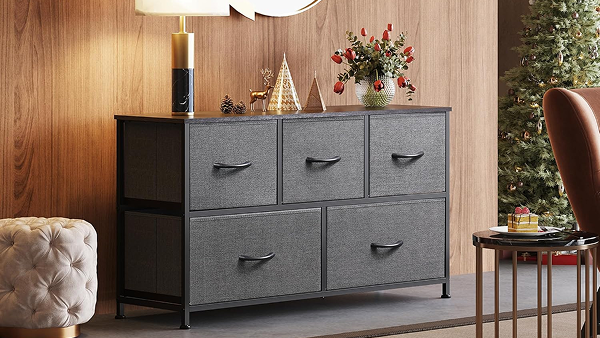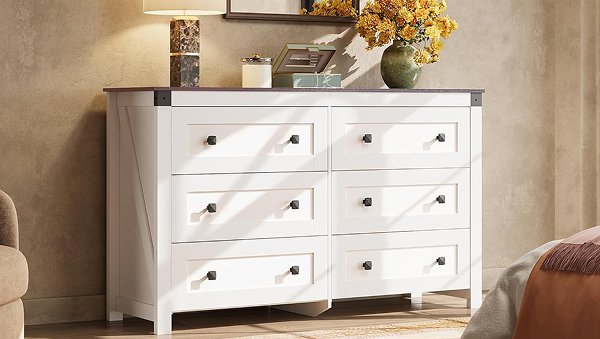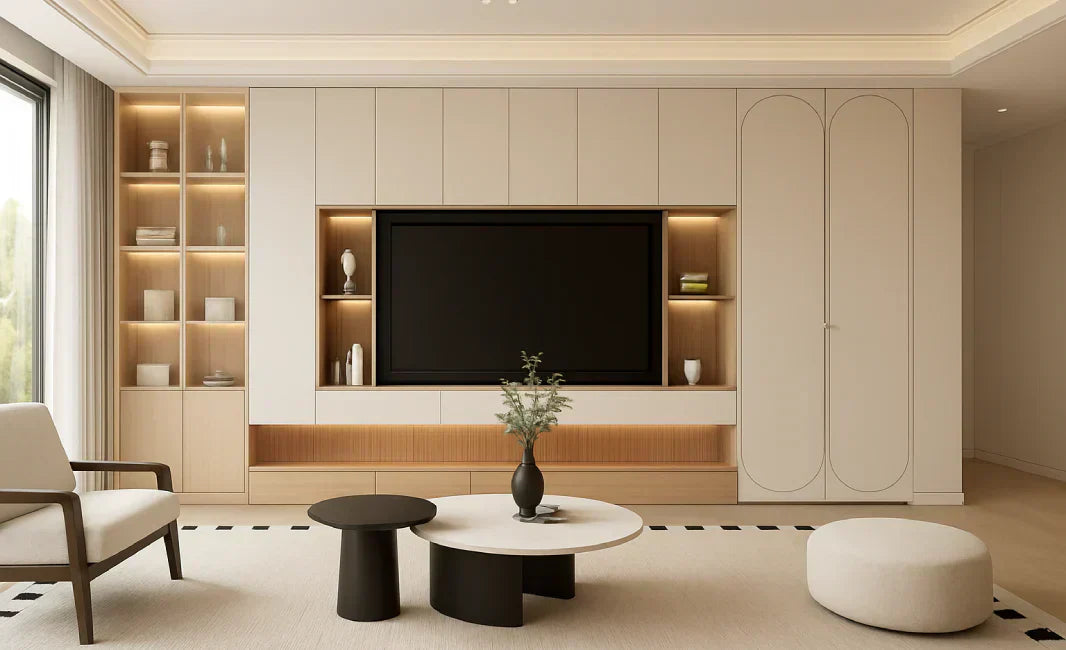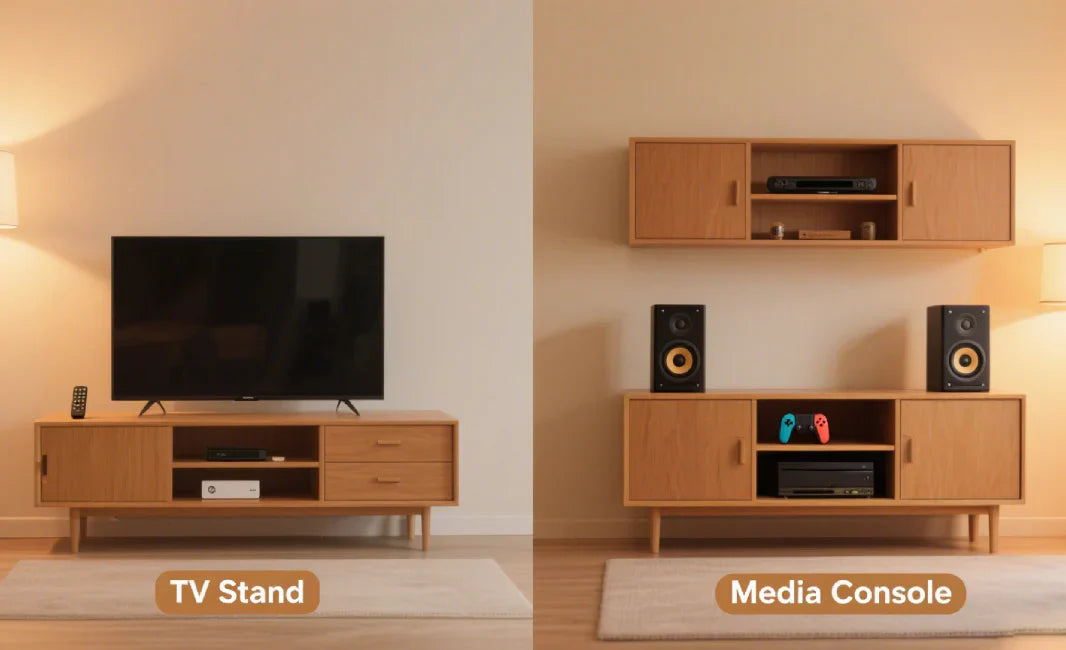A TV stand does more than just hold your TV. It also gives your living room a sense of stability, sets the mood, and helps keep everything in order. The appropriate TV stand may make your whole setup look better, whether you have a small corner or a big open room. The most important thing is to determine what style works best for you.
This guide goes into detail about the numerous kinds of TV stands, from simple floating shelves to fireplace sets. And yes, we'll also talk about other options for people who are wondering what to use instead of a TV stand or what TV stands for. Let's make things simple and clear.
What Is a TV Stand?
A TV stand is a piece of furniture that holds a TV and shows it off, as well as other things that go with it. It usually has sound systems, gaming consoles, media players, or remotes in it. It can be decorative, useful, or both, depending on how it looks. Most people today want something that suits the mood of their home and holds the screen.

What Is a TV Stand Called?
You may have heard several names for it, such "entertainment unit," "media center," or "TV console." What is the official name for a TV stand? It all depends. A TV stand is typically described something that is simple and little. It could be a media console or entertainment center if it goes across the wall or has storage. A "media unit" is another name for a TV stand, but its basic purpose is still the same: to hold your TV and organize the things that come with it.

What Are the Different Types of TV Stands?
There isn't a single answer. The size of the room, the style of the room, and how much storage you require all affect the sort of TV stand you need.
-
Open shelving TV stands have shelves that are open, which is great for minimalist or industrial styles. They keep things light and enable you show off your tech devices or accessories.
-
Closed Shelving TV stands are all about keeping things out of sight. Think cupboards with doors—ideal for a neat space, especially when you want to stow cords, remotes, or DVDs.
-
Corner TV stands are made for compact or hard-to-arrange spaces. They fit tightly into corners, which saves room and still gives you storage space underneath.
-
Entertainment centers are bigger and often take up the whole wall. These are perfect for households with huge TVs and a lot of stuff to store. Some even include side cabinets or bookshelves.
-
Floating TV stands attach to the wall, which frees up floor space and gives the room a sleek, modern aspect. They are common in modern residences.
-
Traditional TV stands have a classic look with solid wood, classic finishes, and storage that is usually symmetrical. They go great with a more formal or vintage look.
-
Minimalist TV stands have simple lines and not much storage. If you don't need a lot of gear, want to keep your attention on the screen, or like the "less is more" look, these are perfect for you.
-
Rolling TV Stands, also known as single TV stands or mobile carts, have wheels that make it easy to move your screen. Great for versatile areas or business environments.
TV Stand Materials
When you shop, the material is important. Wood is strong, lasts a long time, and comes in a wide range of finishes, from rough to smooth. Metal stands can be modern or industrial, with sharp edges and smooth lines. Glass TV stands are more modern, although they do tend to display fingerprints and dust. MDF or engineered wood is a cheap option that is used in well-known TV stands. The ideal material truly depends on how much money you have, how the space feels, and how much use it will get.

Pros and Cons of a TV Stand
TV stands help you organize a room, give you storage space, and raise your screen to the correct height. They also cover up wires and make your home look more complete. Some varieties, such big entertainment centers, might take over a room or feel too big in tiny rooms, though.
If you want a clean design, open shelves and other things might not be the best choice. Home organization statistics show that more than 60% of consumers think their living rooms look messier without storage options that are walled off. So, what kind of TV stand you should have depends on how you live.
What Can I Use Instead of a TV Stand?
You're not the only one who wants to know, "What can I use instead of a TV stand?" Some people choose dressers, sideboards, or even desks that have been changed into something else. A mobile TV table is another alternative that can be used in small flats or shared spaces.
Some people even hang their TVs on the wall and don't use a stand at all. A floating shelf and wall-mounted screen can work for homes that are quite simple. A quality TV stand, like those from Wlive, usually looks ideal for a clean and ordered look.
What Is the Difference Between a TV Stand and a TV Console?
Here's the thing: a TV stand is usually a smaller, simpler object, even though people commonly use the terms interchangeably. A TV console usually has more storage space and a slightly larger footprint. "TV console" seems a little more fancy in design terms, but the two do the same thing. If you're looking around and asking, "What is a TV console?" just know that it's another word for a TV stand, although it seems finer.
What Is the Difference Between a Media Console and a TV Stand?
Another thing that makes no sense. A media console is usually more useful in many ways. You can put more than just your TV on it; speakers, cable boxes, and even record players can fit on it. People also use it in their bedrooms, living rooms, and home offices. TV stands, on the other hand, are primarily about holding the TV itself. This minor variation could affect your choice of TV stand while you're shopping and comparing different sorts, depending on how your gadget is set up.
How to Choose the Right TV Stand for Your Needs?

You need to know the size of your room and screen before you can choose the proper item. Make sure the width of your stand matches the base of your TV. If your screen is 55 inches wide, for instance, you need get a stand that is at least 60 inches wide. Think about how high your couch is if you want a TV stand that is 20 inches high or taller, such a TV stand that is 30 inches high. You should also think about whether you want exposed or concealed storage.
Is this a corner setup or a wall that makes a statement? Looks are also important. Some people want their home to look like a farmhouse, while others want it to look modern or industrial. You can even find types like "TV stand without legs" that give your home a modern, grounded look.
We at WliveHome.com are an excellent place to start if you’re not sure where to begin. We offer attractive and practical TV stands in various shapes and sizes, from floating shelves to fireplace units. Our carefully curated selection combines high quality with affordability, whether you’re searching for the coolest TV stands or just the perfect one for a modest living room.
Conclusion
There is no one "best" TV stand for everyone. But there is a choice that is ideal for you. You need to think about your space, style, and storage needs when choosing the right TV stand. There are many various kinds of TV stands, from floating ones to fireplace ones. Getting the appropriate TV stand for your home might change how it feels.
You might need a 20-inch TV stand for a small room or a living area TV stand that draws attention. According to statistics, 71% of homeowners think that a well-designed TV area makes their living room more appealing. That means a lot. In the end, it's all about finding the right mix of style and function.






Leave a comment
All comments are moderated before being published.
This site is protected by hCaptcha and the hCaptcha Privacy Policy and Terms of Service apply.